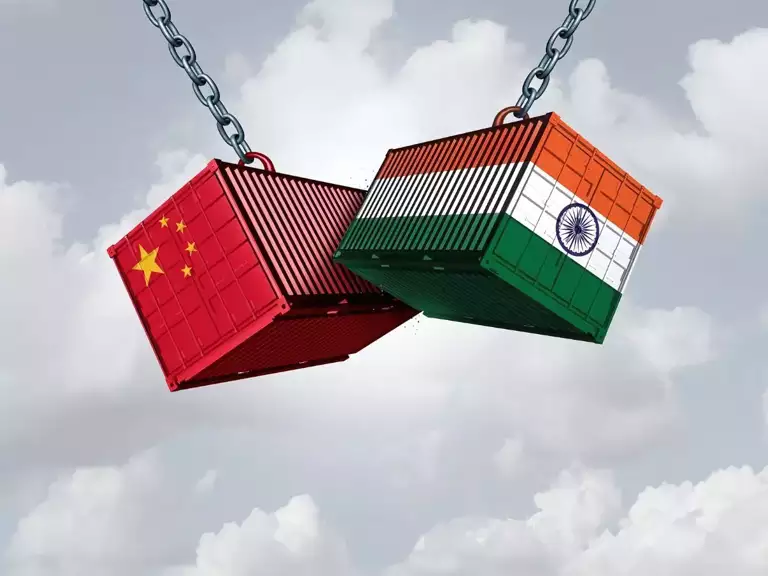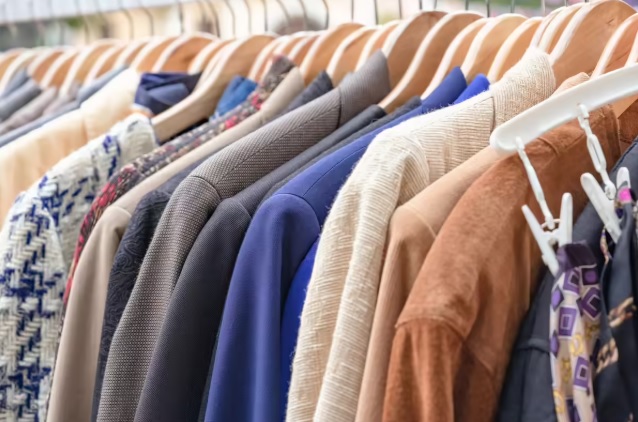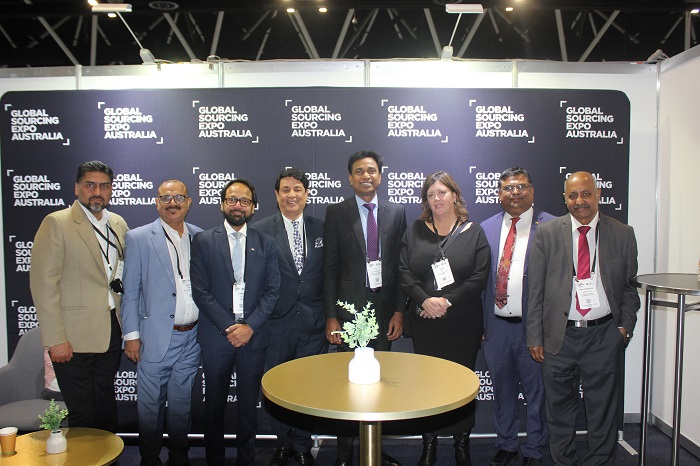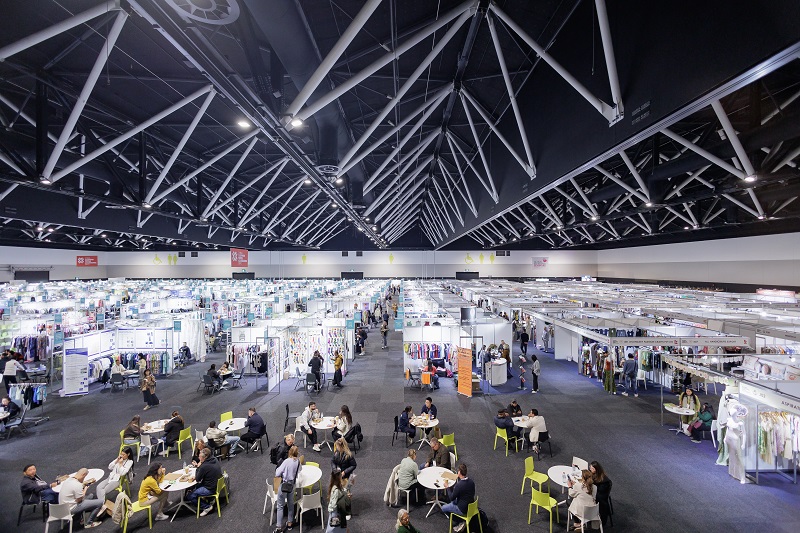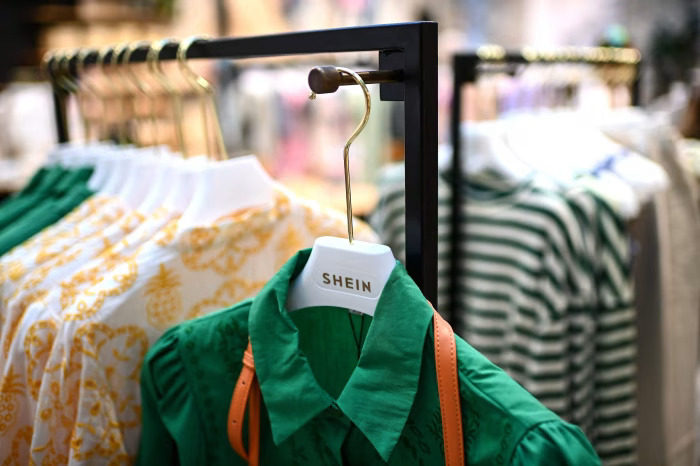FW
European Apparel and Textile Confederation (EURATEX), and its Danish member, Dansk Mode & Textil (DM&T), are jointly urging the Danish Presidency of the EU to prioritize stability and transparency in the textile and clothing industry, Both these organizations are emphasizing on the urgent need to restore confidence for European industries and consumers alike.
Thomas Klausen, CEO, DM&T, states, the Danish Presidency needs to ensure, the EU creates a level playing field and the predictability needed by the industry to make necessary investments.
Euratex and DM&T are urging the Presidency to advance several critical dossiers such as ensure the Circular Economy Act boosts demand for sustainable textile products and establishes a single market for textile waste through clear end-of-waste criteria; reform the Union Customs Code Reform to adopt bolder measures, such as addressing the de minimis threshold and going beyond the €2 handling fee for online parcels; expedite implementation to allow for harmonized EPR schemes across the EU; clarify the future of the Green Claims initiative to combat greenwashing in the fashion industry; ratify the Mercosur FTA to ensure significant gains for European textile companies; monitor ongoing negotiations with India to secure a comprehensive and balanced agreement; rapidly advance the Energy Union to achieve much-needed lower energy prices for European manufacturers and ensure a more efficient and coherent regulatory chemicals framework through a REACH revision that increases transparency, predictability, and prevents companies from relocating outside the EU.
The Danish textile and clothing industry significantly contributes to Denmark's economy, generating 87 billion Danish kroner annually and supporting 96,000 jobs. Similarly, the broader European textile and clothing industry comprises around 200,000 companies, employing 1.3 million workers and boasting a €170 billion turnover, making it a vital economic pillar across many EU regions.
The latest International Production Cost Comparison (IPCC) report by The International Textile Manufacturers Federation (ITMF) offers a comprehensive benchmark of manufacturing costs across the primary textile value chain. This edition provides detailed cost data for the year 2023, with an expanded scope that now includes Uzbekistan and, for the first time, a thorough calculation of the carbon footprint associated with each textile product across its full value chain.
The IPCC publication reveals significant global variations in manufacturing costs. For instance, producing one meter of woven fabric from cotton 1-1/8" in a continuous open-width process (excluding raw material costs) averaged $0.94/meter in 2023. This cost ranged from $0.70/meter in Bangladesh to $1.54/meter in Italy, highlighting a substantial difference in efficiency and cost structures across countries. Breaking this down further, spinning the yarn for this meter of fabric cost an average of $0.31/meter, weaving added $0.25/meter, and finishing contributed $0.38/meter to the average production cost.
The report also details the cost of spinning 1 kg of ring yarn NE/30, averaging $1.63/kg in 2023. This cost varied widely, from a low of $1.19/kg in Vietnam to a high of $2.85/kg in Italy. Labor costs showed stark contrasts, with Italy ($0.97/kg), the US ($0.69/kg), and Korea ($0.54/kg) having the highest, while Indonesia ($0.07/kg), Egypt ($0.03/kg), and Bangladesh ($0.02/kg) reported the lowest. Power costs were highest in Central America ($0.58/kg), Italy ($0.48/kg), and Mexico ($0.42/kg), and lowest in Pakistan ($0.13/kg) and Egypt ($0.12/kg).
The new carbon footprint analysis for woven fabrics processed using continuous open-width methods reveals significant environmental variations. India registered the highest total carbon footprint, exceeding 12.5 kg CO₂e per kg of textile, largely due to high emissions in spinning (4.4 kg) and weaving (4.3 kg). China also showed high emissions, particularly in the finishing stage (3.9 kg).
In contrast, Brazil demonstrated the lowest total carbon footprint, just under 4 kg CO₂e per kg, benefiting from its renewable energy mix and efficient early-stage processes. The United States and Italy also showed relatively low emissions in initial production stages. The newly included Uzbekistan reported moderate emissions across all segments.
The global fashion industry is undergoing an extraordinary technological transformation as leading luxury brands are heavily investing in Artificial Intelligence (AI).
Luxury brands like Gucci and Balenciaga are spearheading early experiments with AI-assisted concept generation tools to accelerate design cycles without compromising creativity. This strategic shift aims to dramatically reduce design time, mitigate sustainability risks, and solidify brand preference in an increasingly competitive luxury market.
AI is enabling virtual prototyping to significantly minimize textile waste, offering custom designs based on individual consumer preferences, and providing sophisticated trend predictions by analyzing machine learning data combined with vast amounts of social media commentary.
According to McKinsey's 2024 report on the State of Fashion, AI is becoming a crucial differentiator for luxury brands, essential for maintaining relevance with future Gen Z consumers. Beyond luxury, even mid-tier brands are evaluating AI to reduce the impact and associated costs of over-developing products that often lead to waste, especially as consumer demand shifts post-pandemic. Pilot projects by Burberry and Kering highlight AI's role in sustainability, expressing interest in virtual fit testing before physical prototyping to cut carbon emissions.
The adoption of AI isn't exclusive to the fashion elite. The accessibility of low-cost or free AI services means new, independent, and self-funded brands can now leverage these powerful tools. This enables them to create and sell designs globally, effectively "flattening the field," as one industry insider observed. A designer in Lagos or Bangkok now has the same "infinite access" to these tools as a Parisian atelier.
This democratization of design aligns with broader fashion retail trends, particularly the increasing importance of social media and e-commerce for small and medium-sized brands to connect with consumers beyond their local markets. As luxury brands grapple with eroding margins, evolving consumer tastes demanding speed and constant change, and expectations for personalization, analysts believe the AI boom will fundamentally transform the creative process in fashion, much like digital marketing revolutionized content creation and retail models.
Presented by the Global Fashion Agenda (GFA), The Global Fashion Summit: Copenhagen Edition 2025 convened over 1,000 participants to accelerate the fashion industry's journey towards a net positive future. Held at the Copenhagen Concert Hall, this year's Summit provided a crucial platform to address the sector's most pressing sustainability challenges amidst intersecting global crises and evolving policy landscapes.
The Summit's Innovation Forum facilitated over 400 connections between stakeholders and 30 solution providers, while the newly introduced Ignite Stage showcased dynamic, innovation-led content focused on scaling impact.
A highlight of the Summit was the announcement of Refiberd as the winner of the Trailblazer Program 2025. Selected from over 200 applications across 44 countries, Refiberd was recognized for its AI-powered hyperspectral imaging technology, which provides precise material identification for accurate sorting, authentication, and traceability – essential for achieving textile circularity.
Over 100 speakers from 26 countries shared their diverse experiences and expertise, emphasizing the global nature of industry transformation. Supported by the H&M Foundation, GFA enabled participation from key manufacturing regions like Bangladesh, Ghana, Nigeria, India, Brazil, and South Africa.
The Summit also explored the crucial role of nature in fashion. In the ‘How Can Fashion Value the Rights of Nature?’ session, Sanya Singh advocated for ‘letting nature shape fashion.’
Discussions on freshwater use highlighted its critical undervaluation and the alarming degradation of ecosystems. Payal Luthra, Global Apparel & Textiles Lead, WWF, cited a devastating 85 per cent loss of freshwater biodiversity since 1970. Kering's recently launched Water-Positive Strategy was presented as a significant initiative in this area. The importance of storytelling to bridge the gap between data and public understanding for inspiring action was also a key theme.
In her keynote address, Jessika Roswall, EU Commissioner for Environment, Water Resilience, and a Competitive Circular Economy, stated, ‘more than a barrier, sustainability is a bridge to competitiveness, innovation and inspiration.’ The Summit also strongly advocated for conducive regulation to support circularity and transparency and for the harmonization of EPR (Extended Producer Responsibility) schemes both within the EU and globally.
In her concluding remarks, Federica Marchionni, CEO, Global Fashion Agenda, urged industry leaders to embrace courage and action. Now is the time to assert your vision and courageously drive action on sustainability, she said.
Reflecting a continued trend observed over several years, Belgium's apparel and clothing accessories imports declined to $1.9 billion in Q1 2025.
Maintaining its position, Germany emerged as the top apparel supplier to Belgium during this period. This highlights the strong intra-European trade relationships within the fashion sector.
Among non-European suppliers, only China and Bangladesh featured prominently, indicating their continued importance in the global apparel supply chain to Belgium.
While apparel imports dipped, other segments of Belgium's textile industry showed mixed results. Home textile imports saw a slight increase in Q1 2025, with China being the leading supplier in this category as well. However, fabric imports also experienced a decline during the first quarter.
The decline in Belgium's apparel imports reflects broader shifts in trade dynamics and potentially a more cautious consumer spending environment or a rebalancing of inventory within the Belgian market. While Germany remains a strong trading partner, the consistent presence of China and Bangladesh underscores their crucial role in providing apparel to European markets. This trend is part of a larger picture of evolving global supply chains and consumer preferences within the fashion industry.
Australia's apparel and clothing accessories imports increased by 6.7 per cent to AU12.238 billion (approximately $7.94 billion) during July 2024–May 2025 period in FY25. As per a report by the Australian Bureau of Statistics (ABS), this growth was mainly influenced by factors such as consumer confidence, retail trends, and the availability of diverse product ranges.
However, this growth also follows a 5.2 per cent decline in total apparel imports during FY24 (July 2023–June 2024), where imports amounted to AU$12.231 billion.
While apparel imports increased in FY25; other segments of the textile industry show mixed results. Imports of textile yarn and fabrics grew from July 2024–May 2025. However, imports of textile fibers declined. Textile fiber exports also contracted by 13.56 per cent during this period.
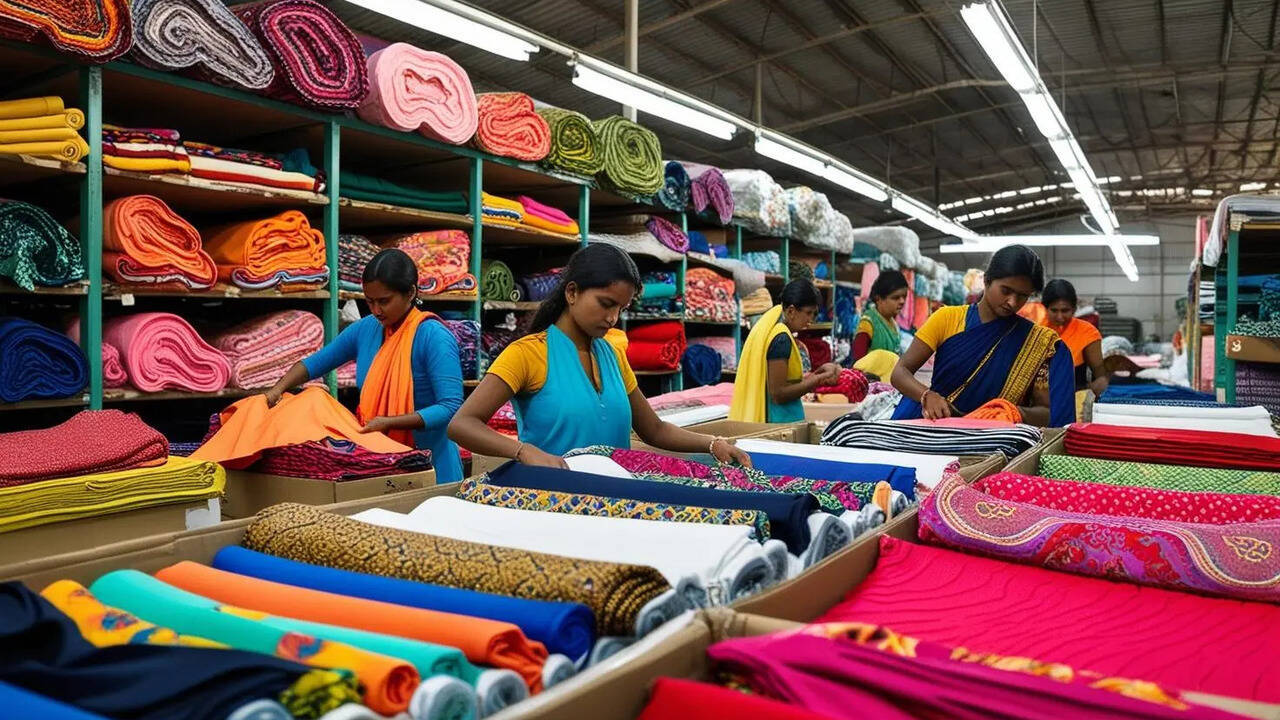
India has moved decisively to restrict fabric imports from Bangladesh, enforcing a port-only policy that bars overland entry of key jute and textile materials. In a fresh notification issued by the Directorate General of Foreign Trade (DGFT), New Delhi declared that specific shipments—including jute products, flax tow, jute yarns, and woven fabrics—will now be allowed entry solely through the Nhava Sheva port in Maharashtra. Effective immediately, the measure is being hailed domestically as a protective step for India's struggling textile sector but is drawing ire in Dhaka as a sign of deepening economic hostility.
The move signals the continuation of a tit-for-tat trade spiral that has escalated sharply since April 2025, when India first withdrew transshipment privileges for Bangladeshi exports to third countries. That was followed by restrictions in May on processed food and ready-made garment (RMG) imports. Now, with the jute segment under the scanner, the fault lines in Indo-Bangladesh trade relations are fully exposed.
What the restriction entails
As per the DGFT's new guidelines, imports of the affected categories are now barred from entering India through any of the land customs stations along the India-Bangladesh border. This includes critical transit points like Petrapole and Benapole, which have long served as commercial arteries between the two neighbours. The only exception: Bangladeshi goods transiting through India en route to Nepal and Bhutan will still be permitted. However, re-exports from these countries back into India have been explicitly prohibited—a clause designed to thwart alleged third-country circumvention tactics.
Trade disruption or domestic revival?
The decision comes with both economic risks and political rewards. Bangladeshi exporters, especially in the RMG and jute segments, will face longer delivery cycles and increased freight costs. Previously, land shipments to India could arrive within 3–4 days. Now, with ocean transit through Nhava Sheva, the wait time stretches to 7–10 days or more.
For Indian retailers and consumers, this could translate into a 2–3 per cent price uptick for winter apparel like T-shirts, jackets, and jeans, especially if the disrupted flow persists into the festival season. But for India’s domestic textile manufacturers—particularly those in jute and cotton weaving hubs—the shift is a potential lifeline.
“This move plugs a significant policy loophole. It not only addresses dumping concerns but helps channel demand back to Indian mills,” says Rajat Mehta, Director, Eastern Textiles Association. “We anticipate a Rs 1,500 crore uptick in capacity utilization by mid-2026 if these measures hold.”
The government, too, is framing this within the larger Atmanirbhar Bharat (self-reliant India) campaign. By stemming the flow of low-cost or allegedly subsidized Bangladeshi imports, it aims to give Indian producers a much-needed competitive edge.
Table : India-Bangladesh trade March 2025
|
Category |
India's exports to Bangladesh ($) |
India's imports from Bangladesh ($) |
|
Total Trade |
$973M |
$171M |
|
Top Indian Exports |
||
|
Cotton Yarn |
$150M |
|
|
Rice (Other Than Basmati) |
$116M |
|
|
Petroleum Products |
$58M |
|
|
Top Bangladeshi Exports |
||
|
RMG (Cotton & Accessories) |
$34.7M |
|
|
Footwear (Leather) |
$14.7M |
|
|
RMG (Other Textile Material) |
$12.3M |
Source: The Observatory of Economic Complexity (OEC), March 2025 data
Unequal trade and the jute flashpoint
Underlying the policy move is a long-simmering grievance: the fate of India’s jute industry. While Bangladesh has built a robust export ecosystem around jute—thanks to subsidies and duty-free access under the South Asian Free Trade Area (SAFTA)—India's jute producers have struggled with falling prices, unpaid dues, and frequent mill shutdowns. “Our farmers are losing out due to under-invoiced and low-grade jute flooding Indian markets,” said Pradeep Saha, a jute grower from Murshidabad, West Bengal. “Government MSP means little when imported jute is sold at below cost.”
India alleges that Bangladesh's jute exports are subsidized and occasionally mislabeled to avoid existing anti-dumping duties. The port-only restriction is intended not just to control volumes but also to enable more thorough quality inspections and prevent regulatory evasion.
Table: India’s jute & textile bast fibre imports from Bangladesh
|
Fiscal year |
Value ($ mn) |
|
FY2017 |
138 |
|
FY2022 |
117 |
|
FY2024 |
144 |
|
2024 |
87.18 (Annualized) |
An eye for an eye: reciprocal restrictions
This hardening of India’s stance coincides with regulatory steps by the Bangladeshi interim administration under Muhammad Yunus, which has blocked Indian yarn and rice exports through land ports, citing the need to shield its own farmers and weavers. Bilateral trade, while still significant at nearly $13 billion, is increasingly marked by protectionism and friction.
“There’s a risk of long-term economic decoupling,” warned Prof. Nusrat Rahman of Dhaka University’s Centre for Trade Policy. “If both sides continue to weaponize trade policy, informal markets may surge and regional economic cooperation will suffer.”
The road ahead
India’s decision to reroute Bangladeshi fabric imports exclusively through Nhava Sheva port may fulfill short-term domestic goals, but it raises broader questions about regional economic integration and diplomatic tact. The impact will reverberate through textile supply chains, price-sensitive retail segments, and border economies where cross-border trade is a livelihood, not just a statistic.
As both nations dig into protectionist positions, a constructive dialogue—perhaps through SAARC or BIMSTEC—may be the only way to prevent economic rivalry from becoming a full-fledged trade war. Until then, fabric isn’t the only thing under strain; so is the very fabric of bilateral trust.

In what’s being described as a high-stakes recalibration of global trade, a newly signed trade agreement between the US and Vietnam is sending ripples through the world’s apparel and textile supply chains. Touted by the Trump administration as a "Great Deal of Cooperation," the pact replaces the 2000 Bilateral Trade Agreement (BTA), ushering in stricter tariff rules that are already prompting global fashion brands to rethink their sourcing strategies.
But beneath the headlines lies a more complex story—of shifting power equations, transshipment crackdowns, and a stark warning for India, which is now in its own critical phase of negotiating a trade deal with Washington.
From preferential access to flat tariffs
The previous BTA between the US and Vietnam granted Vietnamese exporters preferential tariff rates ranging between 2 per cent to 10 per cent, helping transform Vietnam into a sourcing powerhouse. But under the new agreement, all Vietnamese exports to the US now face a flat 20 per cent tariff, while US goods will enter Vietnam duty-free.
“This is a double-edged sword,” said a trade official familiar with the negotiations. “While it opens up the Vietnamese consumer market to American brands, it significantly erodes the competitive advantage Vietnam enjoyed in textiles, furniture, and electronics.” The change also follows allegations from US officials, including Peter Navarro, that Vietnam was acting as a backdoor for Chinese goods seeking to evade US tariffs. These claims have materialized into one of the deal’s most consequential clauses: a 40 per cent duty on transshipped goods.
Transshipment clause, Vietnam’s China dilemma
At the heart of the new deal lies a contentious provision—a punitive 40 per cent tariff on goods exported from Vietnam but manufactured in other countries, particularly China. This move directly targets the widespread practice of transshipment, where Chinese-origin goods are rerouted via Vietnam with minimal processing.
For the $52 billion apparel trade between Vietnam and the US, this spells disruption. Roughly 70 per cent of Vietnamese apparel exports to the US depend on Chinese fabrics or components. Under the new rules, these products could now be reclassified and hit with the steep 40 per cent levy.
“This clause fundamentally alters how origin is interpreted in global trade,” says Amita Joshi, a trade economist. “If you’re a brand sourcing yarn from China and stitching in Vietnam, you’re no longer safe. The value-added threshold has effectively been tightened.”
Fashion industry fallout
For global brands like Nike, Lululemon, and H&M, Vietnam has long been a vital part of their supply chains. Between 2001 and 2023, Vietnam’s exports in textiles, apparel, footwear, and furniture grew from $800 million to over $135 billion, helped by favorable access to Western markets.
But the 20 per cent flat tariff, while better than the originally proposed 46 per cent, still dampens that growth story. According to Apparel Export Promotion Council (AEPC) data, the new duties could increase landed costs by 8–12 per cent for many US retailers depending on product type and production footprint. “The big fear is not just the tariff. It's the administrative and compliance complexity,” said a sourcing executive from a US retail giant. “You can’t just show an invoice now—you need traceability down to the fiber.”
Table: Vietnam’s top export categories to the US (2023)
|
Category |
Export value ($bn) |
Using Chinese inputs |
|
Apparel & Textiles |
52.4 |
70% |
|
Footwear |
23.1 |
62% |
|
Furniture |
19.7 |
58% |
|
Seafood |
8.2 |
22% |
|
Electronics |
25.6 |
45% |
India’s turn, what the GTRI warns about
As India prepares for its own trade pact with the US, the Global Trade Research Initiative (GTRI) has issued a clear warning: learn from Vietnam’s cautionary tale. “India must negotiate enforceable rules of origin and guard against flat duty structures,” said Ajay Srivastava, Co-founder of GTRI. “Otherwise, Indian exports could end up facing the same unpredictable barriers.”
GTRI’s recommendations for India
• Avoid flat tariffs: These fail to account for sectoral differences and can cripple specific industries.
• Insist on clear origin rules: The complexities and potential legal ambiguities surrounding the 40 per cent transshipment tariff underscore the importance of clear and enforceable rules of origin in trade agreements.
• Prepare for sudden policy shifts: What was a trade advantage yesterday can become a liability overnight.
Table: India-US apparel trade (FY24)
|
Metric |
Value |
|
India’s Apparel Exports to US |
$5.1 Billion |
|
US Share in India’s Apparel Trade |
26% |
|
India’s Fabric Dependence on China |
32% |
Resilience over cheap labor
Global supply chains are already responding. According to a 2025 Fashion Industry Pulse Survey, 43 per cent of brands are looking to diversify sourcing from Vietnam, with increased interest in Mexico, India, and Central America. “Resilience is now the keyword,” said Michelle Hwang, a senior VP at a global apparel group. “Low cost isn’t enough. Brands want agility, transparency, and political safety.”
Table: Brands most dependent on Vietnam
|
Brand |
Vietnam sourcing % |
Comments |
|
Nike |
50% |
High reliance on Vietnamese footwear factories |
|
Lululemon |
35% |
Core leggings and performance gear |
|
Gap Inc. |
28% |
Includes both Old Navy and Banana Republic |
|
Uniqlo (Fast Retailing) |
20% |
Primarily knitwear and casualwear |
Trade policy as a fashion trendsetter
This isn’t just a trade deal—it’s a bellwether for how geopolitics is increasingly shaping retail shelves. The US-Vietnam agreement reflects a world where trade liberalization is no longer a given, and where every tariff line carries strategic weight. For Vietnam, the deal is both a setback and an opportunity to localize more of its supply chain. For the US, it represents a move towards fair trade enforcement.
Indeed, the deal is undeniably sparking concern for global fashion sourcing executives. While Vietnam's cost structure and proximity to Asian markets have positioned it as a preferred sourcing hub, the new tariffs and the strict enforcement of transshipment rules necessitate a strategic reassessment. Companies are now faced with the challenge of balancing cost efficiencies with the imperative of supply chain resilience. This could accelerate the trend of diversifying manufacturing bases away from over-reliance on a single country and exploring new sourcing destinations to mitigate future trade-related disruptions. For India, it’s a warning to tread carefully but also a chance to position itself as a stable, scalable, and rule-abiding sourcing destination.
“In the new global trade order, agility, clarity, and compliance will matter more than just low wages,” opines Joshi. “India’s edge will lie in playing the long game, not chasing short-term wins.”

The digital racks of fashion e-commerce are changing as a new report by BoF Insights ‘The New Era of Fashion E-Commerce’, done in collaboration with Amazon Fashion & Sports in Europe, reveals shifting consumer priorities, with trust, reliability, and convenience now eclipsing fleeting trends and even price as key drivers of online purchasing decisions. The days of ‘more-is-more’ consumption are yielding to a more intentional shopping experience, compelling brands to recalibrate their strategies for a demanding new era.
The report, based on a proprietary survey of fashion shoppers across the EU5 (UK, Germany, France, Italy, and Spain) conducted in April 2025, highlights the value equation in fashion e-commerce is being redefined.
Multi-brand retailers emerge new discovery hubs
The report shows multi-brand retailers are emerging as the dominant force in fashion discovery. Almost 39 per cent of EU5 shoppers surveyed cited these platforms as their primary source of online inspiration. This trend got a boost with increasing economic uncertainty, with 23 per cent of frequent fashion shoppers (those who purchased fashion online more than five times in the last year) opting for large, well-known retailers due to their perceived dependability and convenience.
This fluidity in customer journey, particularly among digitally fluent younger shoppers, necessitates a ubiquitous brand presence. The report underscores the power of multi-channel visibility, with 71 per cent of EU5 consumers agreeing that seeing a brand across multiple channels makes them more likely to trust it.
Ruth Diaz, VP of Amazon Fashion and Sports Europe, emphasizes this point and says “Today’s fashion customer moves fluidly across diverse channels, which is why we focus on creating exciting experiences that meet them where they are, wherever and however they want to shop.” She says, they know that when brands create multiple touchpoints, customer engagement increases dramatically.
The rise of practical value
Perhaps the most significant revelation from the report is the waning importance of trendiness. Only 12 per cent of EU5 customers surveyed prioritize trendiness when shopping for fashion online. This is a stark departure from the pre-pandemic era, where "ephemeral fashion trends" and "disposability" were more pronounced, as observed by Doug Stephens, Founder and Chief Executive of Retail Prophet. Instead, shoppers are now seeking tangible benefits that address the inherent pain points of online shopping. The report highlights critical customer priorities:
Table: Top customer priorities in online fashion shopping (EU5)
|
Priority |
Focus |
|
Reliability |
Consistent delivery, accurate product representation |
|
Fit Confidence |
Ability to predict the right size and fit |
|
Clear Product Info |
Comprehensive details, high-quality images |
|
Personalisation |
Tailored recommendations, size guidance |
|
Durability & Quality |
Longevity of the product, material integrity |
Over 40 per cent of EU5 customers surveyed cited personalized size recommendations as a top factor influencing their online fashion purchasing behavior. This demand is leading to the rapid adoption of nascent technologies like immersive 3D product views and AI-powered personalization, which are transitioning from "nice-to-haves" to "must-haves."
For example, Amazon Fashion & Sports' AI-powered size and fit recommendations exemplify this shift. The report notes that over 90 per cent of Amazon customers who buy the recommended size report satisfaction with their purchase, demonstrating the tangible impact of such innovations on customer confidence and loyalty.
The new loyalty driver
In a competitive landscape where customer loyalty is increasingly difficult to secure, consistency across all channels is paramount. Whether a customer encounters a brand on social media, its own website, or a multi-brand retailer, the expectation for a seamless and high-quality experience remains constant.
Beyond the front-end experience, "what happens behind the scenes matters just as much," the report emphasizes. Operational excellence, encompassing fulfillment accuracy and logistics speed, is rapidly becoming a key differentiator. Brands that can consistently deliver on promises of reliability and convenience are not only converting more customers but also fostering long-term loyalty and unlocking incremental growth.
The report therefore, serves as a critical guide for brands navigating this evolving digital landscape. By prioritizing trust, convenience, and a deep understanding of evolving customer expectations, fashion businesses can not only meet rising demands but also forge lasting connections in a highly competitive market.
Experiencing a significant expansion, the global technical textile market is projected to grow to a value of $331.8 billion by 2032, up from $191.7 billion in 2022. This represents a robust Compound Annual Growth Rate (CAGR) of 5.7 per cent from 2023 to 2032, according to a comprehensive report by Allied Market Research.
This impressive growth is primarily driven by escalating demand across several key industries, including automotive, healthcare, construction, and agriculture. Advancements in textile manufacturing technologies, such as the integration of smart textiles and nanotechnology, are also playing a crucial role by enhancing the performance, durability, and overall functionality of these specialized materials. Concurrently, a strong global push towards sustainability is reshaping material choices, with both eco-conscious consumers and new regulations driving the adoption of biodegradable and recycled alternatives. Furthermore, robust economic growth and improved living standards in emerging economies are expanding the everyday applications of technical textiles.
The market is currently witnessing several transformative trends. The integration of sensors and conductive fibers is revolutionizing applications. This includes their use in healthcare monitoring, advanced sportswear, and cutting-edge wearable technology, offering new possibilities for personal and industrial use.
There's a notable surge in demand for recycled PET-based geotextiles and agro-textiles. The industry is increasingly emphasizing bio-based fibers, low-energy production methods, and waterless dyeing techniques to minimize environmental impact.
Technical textiles like geotextiles and non-woven fabrics are seeing increased adoption. They're critical for soil stabilization, erosion control, and filtration, especially in the rapidly developing infrastructure projects of emerging markets.
The automotive and aerospace sectors are driving demand for technical textiles with enhanced fire retardant, lightweight, and high-strength properties. These innovations are crucial for improving safety and achieving better fuel efficiency in vehicles and aircraft.



